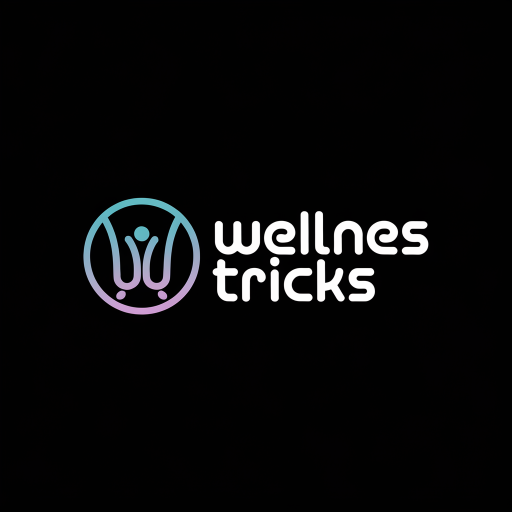This 3-Minute Breathing Exercise Clears Mental Fog
Have you ever felt mentally overwhelmed or foggy? You’re not alone. Many people experience this sensation, but there’s a simple way to clear your mind. A quick, focused breathing exercise can significantly enhance your cognitive function and relaxation. By understanding the technique, you can transform those moments of haze into clarity and calm. You might be wondering how this works. Let’s explore the benefits and steps of this effective practice.
Understanding Mental Fog
Mental fog can feel like a heavy blanket, dulling your thoughts and making it hard to focus. You might notice it creeping in during stressful days or after poor sleep.
This mental haze can disrupt your daily tasks and reduce your overall productivity. To combat this, you should explore mental clarity breathing techniques.
These breathing exercises help clear your mind and sharpen your focus, bringing a sense of awareness back to your thoughts. By practicing mindfulness and intentional breathing, you can cut through the fog and regain your mental sharpness, allowing you to tackle challenges with renewed energy. Deep breathing techniques can be particularly effective for reducing stress levels and enhancing your overall well-being.
Benefits of Deep Breathing
While you mightn’t realize it, deep breathing offers a wealth of benefits that extend beyond just relaxation.
It helps reduce stress levels, allowing your mind to feel clearer and more focused. By increasing oxygen flow, deep breathing enhances cognitive function, boosting your concentration and productivity.
It can also lower your heart rate, promoting a sense of calm. Over time, practicing deep breathing can even improve your emotional well-being, making you more resilient to daily challenges. Additionally, incorporating a quick breathing technique can further amplify these effects, helping to calm your mind during stressful moments.
Preparing for the Exercise
Before you start your breathing exercise, find a quiet space where you won’t be disturbed.
Take a moment to relax your body and release any tension you might be holding.
Finally, set a timer for your session so you can focus fully on your breath without distractions. Practicing calming breathwork can significantly enhance your overall well-being.
Find a Quiet Space
Where can you find the perfect spot to quiet your mind? Look for a location free from distractions, like a peaceful corner of your home, a serene park, or even your car.
Ensure it feels comfortable and safe, allowing you to focus entirely on your breathing. If possible, choose a spot with natural light or soothing sounds, like birds chirping or leaves rustling.
Settle into a space that feels welcoming, where you won’t be interrupted. The key is to create an environment that encourages stillness and reflection, helping you prepare for the clarity that comes with this three-minute breathing exercise.
Relax Your Body
Relaxation is essential for achieving a clear mind before you begin your breathing exercise.
Start by finding a comfortable position, whether sitting or lying down. Close your eyes gently and focus on letting go of any tension in your body. Notice your shoulders, releasing them away from your ears. Allow your jaw to relax, and take a moment to feel the weight of your body against the surface beneath you.
Breathe naturally, feeling the rise and fall of your chest. By engaging in this mindful relaxation, you’re preparing your body to fully benefit from the upcoming breathing exercise.
Set a Timer
Once you’ve found your comfortable position and released any tension in your body, it’s time to prepare for your breathing exercise by setting a timer.
Choose a duration of three minutes—this will keep you focused and prevent distractions. You can use your phone, a kitchen timer, or a stopwatch.
When setting the timer, consider placing it on a soft volume so it won’t startle you at the end.
Once it’s ready, take a deep breath and mentally commit to being present during this time.
This small step helps create a dedicated space for your mind to clear and rejuvenate.
Step-by-Step Breathing Technique
A simple yet effective breathing technique can help clear your mental fog and enhance your focus. Follow these steps for a refreshing experience:
| Step | Action | Duration |
|---|---|---|
| 1 | Inhale deeply | 4 seconds |
| 2 | Hold your breath | 4 seconds |
| 3 | Exhale slowly | 6 seconds |
| 4 | Pause before inhaling | 4 seconds |
| 5 | Repeat for 3 minutes |
Engaging in this simple breathing exercise daily can significantly boost your mental clarity and keep distractions at bay. Try practicing this technique daily to boost your mental clarity and keep distractions at bay. You’ll feel more centered in no time!
Enhancing Your Practice
To get the most out of your breathing practice, consider incorporating a few additional techniques that can deepen your experience.
Try these:
-
Set a Quiet Space****: Choose a peaceful environment to minimize distractions during your practice.
-
Focus on Posture: Sit or stand comfortably to allow for better airflow and relaxation.
-
Use Aromatherapy: Incorporate calming scents like lavender or eucalyptus to enhance your focus.
-
Engage Visualization: Picture a serene scene or positive outcome as you breathe to encourage mindfulness.
Incorporating effective supplements known to enhance skin glow can also improve your self-esteem and overall well-being.
Implementing these techniques can help you clear mental fog and elevate your overall practice.
Enjoy the journey!
Integrating Breathing Exercises Into Daily Life
While integrating breathing exercises into your daily routine might seem challenging, even a few minutes can significantly boost your mental clarity and overall well-being. Try these simple moments to practice:
| Time of Day | Breathing Exercise |
|---|---|
| Morning | 3-minute deep belly breaths |
| Midday | 5-minute box breathing |
| Evening | 4-7-8 breathing technique |
Choose a time that works for you and commit. By consistently practicing, you’ll gradually notice increased focus and reduced stress. Remember that proper breathing techniques can enhance concentration, making it a pivotal part of your routine—your mind and body will thank you!

